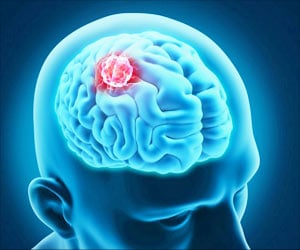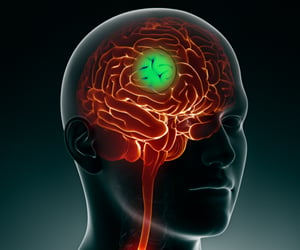Highlights:
- Pediatric solid tumors are rare in occurrence and difficult to study due to limited resources.
- St. Jude Children’s Research Hospital has created a Childhood Solid Tumor Network (CSTN) consisting of tumor tissue samples and related data.
- This database is being offered at a no-cost access to researchers globally to advance understanding and treatment of the disease.
Pediatric Solid Tumors
Pediatric solid tumors are of two kinds - sarcomas and carcinomas. They are mostly treated with surgery.- Sarcomas are tumors that occur in a blood vessel, bone, fat tissue, ligament, lymph vessel, muscle or tendon. There are many types of sarcomas.
- Carcinomas are tumors that form in epithelial cells of the skin, glands and the linings of organs like the bladder, ureters and part of the kidneys.
Some specific types of solid tumors include
- Neuroblastoma is a type of cancer that develops from nerve cells called neuroblasts in fetuses.
- Wilms tumor is a cancer of one or both kidneys.
- Rhabdomyosarcoma is a cancer found in skeletal muscle cells of any part of the body.
- Retinoblastoma is a cancer that starts in the retina in the eye.
- Osteosarcoma and Ewing sarcoma are two types of bone cancer.
Management for solid tumors includes surgery, interventional radiology, radiation therapy and chemotherapy.
In order to better understand solid tumors and to scale up their research and treatment, a strong database of tumor tissue samples and other resources are required.
Childhood Solid Tumor Network
A resource database called Childhood Solid Tumor Network (CSTN) was created and launched in 2013, by Howard Hughes Medical Institute investigator Michael Dyer, PhD, of St. Jude Developmental Neurobiology, and Alberto Pappo, MD, of St. Jude Oncology.The main goal of the network was to offer to the world one of the largest and most comprehensive free of charge collection of scientific resources so that researchers can use them to study poorly understood and difficult-to-treat solid tumors in pediatric patients, with an ultimate goal to promote global discovery and new treatments and to speed translation to the clinic.
One of the ways to share this database was by learning to grow human tumors in the same organ in mice. These tumors are called orthotopic patient-derived xenografts.
The network has
- Samples from more than 67 different patient tumors representing 12 types of pediatric solid tumors
- Information about the drug sensitivity, pharmacokinetics and the molecular make-up of the tumors
- Data that can be accessed without requiring the commitment to collaborate with St. Jude scientists
- Investigators studying the bone cancer osteosarcoma have an additional 20 patient tumor samples available for research in addition to the existing and widely used five osteosarcoma cell lines.
- To study eye tumor retinoblastoma, investigators now have an additional 18 retinoblastoma tumor samples available for research along with the existing and widely used two cell lines.
Orthotopic Patient-derived Xenografts
After getting the consent of patients and parents, the tumors of St. Jude patients were grown in the same organ of mice, as opposed to the original approach of growing them in the flank of mice. These were called orthotopic patient-derived xenografts."The tumor samples were collected at diagnosis, recurrence and autopsy. Many came from patients with recurrent disease, which is important since previously we have had few models of recurrent pediatric solid tumors," Dyer said.
So far, tumor samples from the biopsies and surgical specimens of 168 St. Jude patients have resulted in creating 67 pediatric solid tumors, representing neuroblastoma, osteosarcoma, Wilms tumor, retinoblastoma, rhabdomyosarcoma and other less common tumors after removing patient identification.
When the original patient tumor was compared to the orthotopic xenografts, the analysis showed that the latter retained its "molecular fingerprint" even after being grown in successive generations of mice. Dyer said this suggests that the tumors maintain their molecular identity when grown in the same microenvironment in mice. This can help to build more accurate models for tracking tumor development and drug sensitivity.
Solid tumors have subsets of cancer cells called clones that have different mutations. In order to obtain better cure rates it is important to understand and address clonal diversity. If all the clones in a tumor are not killed, the tumor does not get treated, as that one clone has the potential to multiply and trigger a fatal relapse. Hence, along with whole-genome and whole-exome sequencing and gene-expression profiling, the analysis also included the detailed examination of the genomic or clonal complexity of pediatric solid tumor orthotopic xenografts.
Drug-sensitivity Data
Researchers at St Jude also demonstrated the potential of orthotopic xenografts to speed drug discovery and advance multi-drug chemotherapy. Orthotopic xenografts were used in a model to enhance sensitivity of drug screening to help identify the most promising compounds to move into clinical trials. This resulted in obtaining more than 500,000 data points on drug sensitivity, metabolism and related information.Obtaining drug sensitivity screening has already helped researchers to identify children with the muscle tumor rhabdomyosarcoma to most likely benefit or be particularly sensitive to a combination therapy that includes the experimental drug, AZD1775. AZD1775 is an inhibitor of the enzyme expressed at high levels in a variety of solid tumors called WEE1 that is involved in cell division.
Orthotopic xenografts of high-risk rhabdomyosarcoma were used to show that the tumors responded when AZD1775 was combined with the chemotherapy drugs irinotecan and vincristine (drugs that are currently used against rhabdomyosarcoma).
"This study shows that orthotopic patient-derived xenografts can serve as a bridge connecting basic and translational research to improve outcomes for patients," Dyer said. "It serves as the gold standard for development, characterization and use of patient-derived tumors."
In fact, preparatory work has already begun to incorporate the finding into an ongoing national clinical trial of the combination therapy for certain high-risk pediatric solid tumor patients.
The work is going to be published in an online version of the scientific journal Nature.
Future Plans for Childhood Solid Tumor Network
CSTN now contains around 100 pediatric solid tumors and plans are underway to develop additional orthotopic patient-derived xenografts. Scientists are also planning to include induced pluripotent stem cells (immature stem cells that can grow into any cell type in the body) from children who are genetically predisposed to develop cancer.References:
- Elizabeth Stewart, Sara M. Federico, Xiang Chen, Anang A. Shelat, Cori Bradley, Brittney Gordon, Asa Karlstrom, Nathaniel R. Twarog, Michael R. Clay, Armita Bahrami, Burgess B. Freeman, Beisi Xu, Xin Zhou, Jianrong Wu, Victoria Honnell, Monica Ocarz, Kaley Blankenship, Jason Dapper, Elaine R. Mardis, Richard K. Wilson, James Downing, Jinghui Zhang, John Easton, Alberto Pappo, Michael A. Dyer. Orthotopic patient-derived xenografts of paediatric solid tumours. Nature, (2017); DOI: 10.1038/nature23647
- Childhood Solid Tumor Network - (https://www.stjude.org/research/resources-data/childhood-solid-tumor-network.html)
Source-Medindia














